
ENV Proofing, which stands for Environment Proofing, is an advanced approach to property protection that goes beyond the standard waterproofing measures. Currently, waterproofing is the primary safeguard that most builders and real estate developers provide for their properties. While concrete structures are typically designed with a focus on structural stability and longevity, they often fail to account for the broader environmental factors-such as temperature, humidity, vibrations, noise, and air pollution-that can affect both the building and its occupants. These external influences directly impact the durability of structures and the well-being of those living or working within them, making comprehensive environmental protection essential.
Environmental Vulnerabilities in Luxury Residential Properties
Even luxury residential properties often fail to offer adequate protection against environmental factors like ambient heat and moisture. Concrete structures, in particular, do not prevent water vapour from exterior humid air from entering. Without a proper vapour barrier on the exterior, beyond a mere coat of acrylic paint, moisture can easily penetrate the concrete through capillary action. Once moisture enters, it spreads throughout the structure, leading to persistent retention within the walls and floors. This can lead to unnoticed mold and fungus growth, which thrives in damp environments.
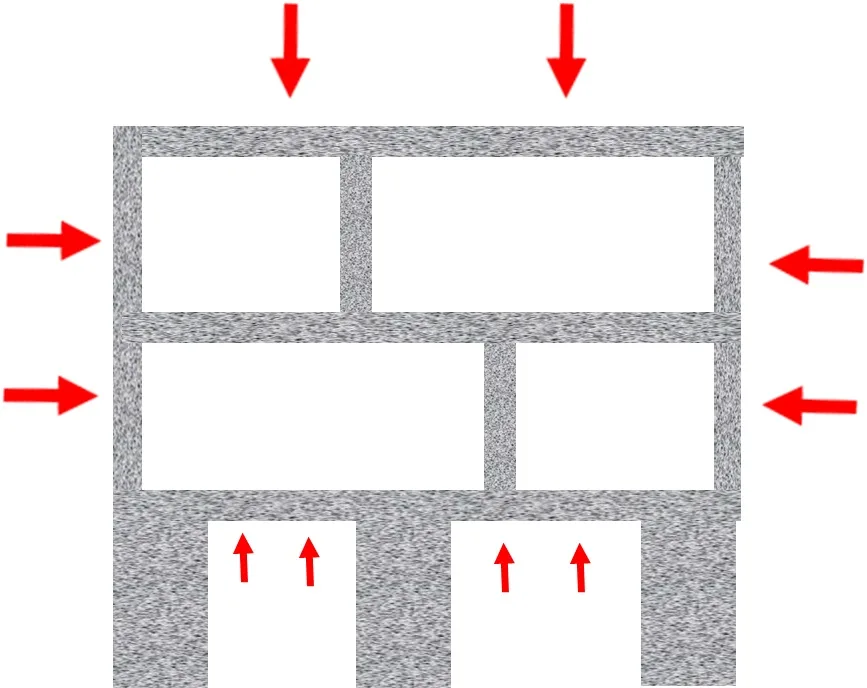
Moisture-Related Problems in Flooring
Moisture that infiltrates floors and walls creates conditions conducive to the growth of fungus and mold, often going unnoticed. Ceramic vitrified tiles with joints expose the concrete beneath to the interior air, and joint fillers in spacer joints are vapour permeable, allowing moisture to pass through. Taper tile joints are particularly problematic, providing direct access to the underlying concrete. Even ceramic vitrified tiles, while less vapour permeable, still allow vapour to pass through to the interior.
Granite and Marble Flooring Issues
Floors made from granite or marble fare worse, as these materials are highly porous and vapour permeable. They are typically laid with taper joints, creating open connections to the concrete below. This further exacerbates the issue of moisture permeability, leading to fungal growth.
Wall and Floor Moisture and Its Impact
Concrete or masonry walls offer no protection against vapour. Wall putty and paint do not act as vapour barriers, leaving the walls vulnerable to moisture absorption. The result is a surface prone to fungal and mold growth. Conventional cleaning methods do not address the problem, as they do not clean the concrete below the tiles or within granite or marble surfaces.
Indoor Air Quality and Comfort Affected by Moisture
Surface fungus and mold growth negatively impact indoor air quality, often producing a mild to severe foul odor that occupants may become accustomed to. In luxury interiors, this is a significant issue, as even minor moisture can diminish the sense of comfort. A moist floor, even if unnoticeably damp, can cause discomfort to bare feet, reducing the usability of the space. A completely dry floor (measured at 0% moisture with a quality moisture meter) enhances the luxury, comfort, and utility of the floor.
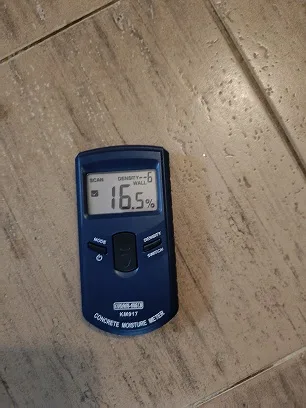
The above picture shows Moisture reading in a bathroom floor (appearing fully dry)
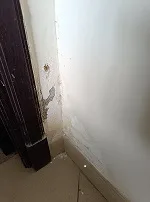

Misunderstood Waterproofing Issues in Bathrooms
The images above illustrate the effects of moisture on walls adjacent to bathrooms, a problem often misinterpreted as a waterproofing issue. However, this is not the case. This common issue, observed in many apartments and villas, is frequently addressed with waterproofing solutions that do not rectify the root cause. Upon closer inspection, the moisture buildup typically occurs on the exterior side of the dry area of the bathroom, not the wet area, and is often concentrated near the entrance of the bathroom.
The moisture beneath the tiles in the wet area spreads through capillary action in the screed. The only point where there is no waterproofing is at the door, where the screed below the tiles of both the bathroom and the adjoining living room connect. This forms a pathway for moisture to rise on the exterior side of the wall, where no waterproofing is present. If it were truly a waterproofing failure, dampness and leakages would also be visible on the sunken slab below or on the exterior of the wet area. However, since the issue primarily appears around the door area and on the exterior of the dry area, it confirms that the problem is not related to waterproofing alone.

The above picture shows the moisture level at the affected area. Hence apart from waterproofing, bath rooms must also have Moisture proofing which should extend across the entire premises.
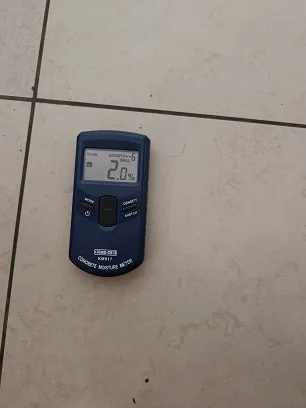

The above picture on the left shows Moisture reading on a living room tiled floor. The one on the right shows Moisture in the tile joints. A zero reading is expected to reflect total dryness of the floor.
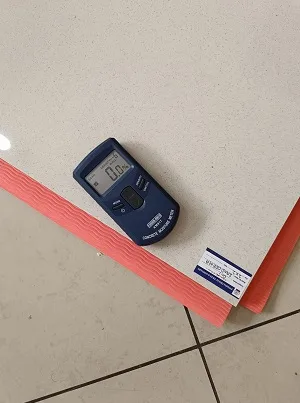
Now the reading shows Zero on a tile loosely kept above an insulator and vapour barrier.
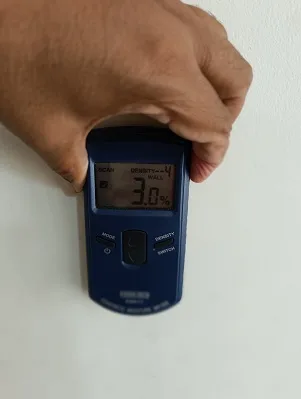
Picture shows moisture reading on a painted concrete wall. These measurements were taken in an apartment on the 18th floor located in Bangalore which is a city with relatively low humidity. Also there were no rains for almost a month before this measurement was done.
Villas, Row houses and bungalows built on the ground are exposed to even more severe conditions.
Thermal Conductivity of Building Materials and Its Impact
Apart from moisture, heat travels through concrete walls, roofs, and floors. Concrete’s thermal conductivity is much higher than other building materials like clay bricks, making interior spaces susceptible to temperature fluctuations. Here are typical thermal conductivity values:
- Concrete: 2.5 to 3 Watts/meter Kelvin
- Clay bricks: 0.5 to 1 Watts/meter Kelvin
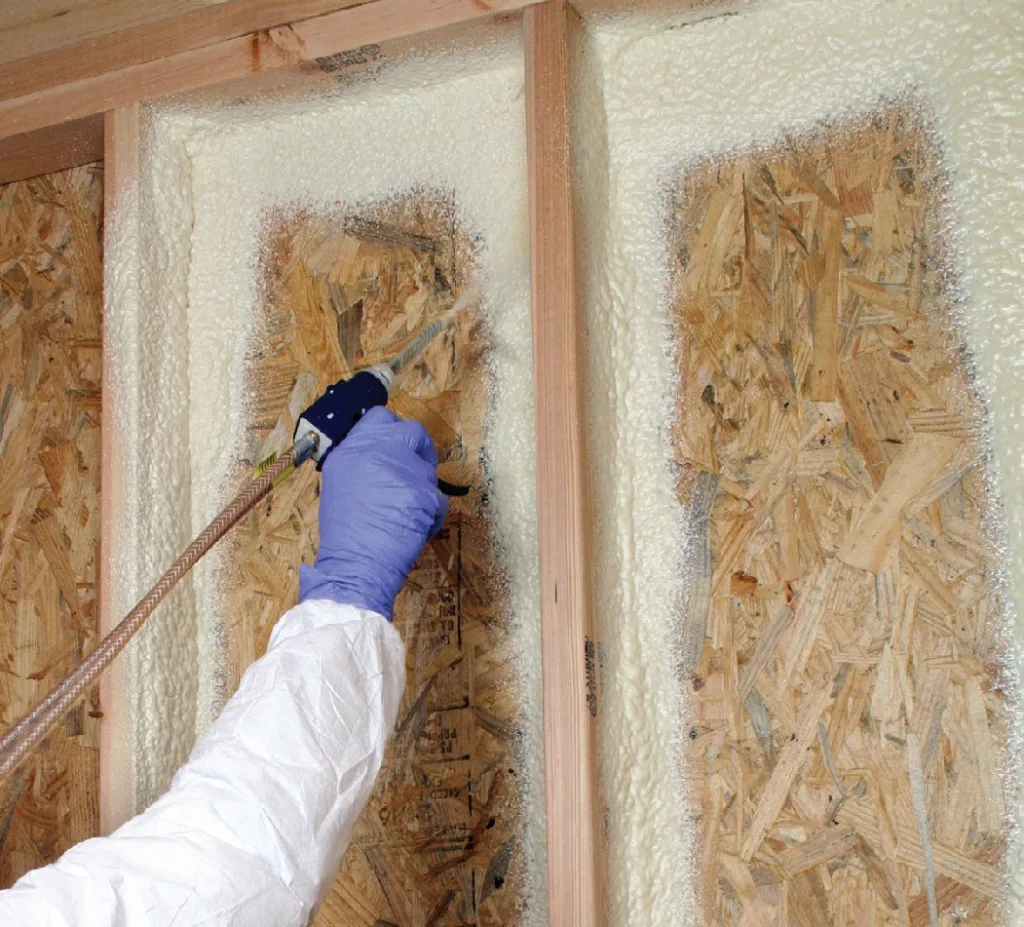
Interior Thermal Insulation Solutions
Interior thermal insulation can significantly reduce heat exchange between the exterior and interior of a building. Materials like polyurethane foam, with a conductivity as low as 0.02 Watts/meter Kelvin, offer excellent insulation.
Typical measured temperature values in Bangalore:
- Without insulation: 17°C to 29°C
- With insulation: 22°C to 24°C
The cost of insulation can be recovered over time through energy savings.
Impact Noise and Vibration in Urban Living
Impact noise and vibration present significant challenges, especially in densely populated cities and apartment complexes. Unlike airborne noise, impact noise travels through the concrete structure, creating disturbances that can disrupt daily life. Common sources of impact noise include footfalls, furniture movement, and repair activities involving either power tools or manual labor, as well as traffic-related vibrations.
Apartments situated near Metrorail lines or flyovers often experience heightened impact noise due to the movement of trains and vehicles. This proximity can lead to a continuous stream of disturbances that affect residents’ comfort and peace.
In many cases, airborne noise accompanies impact noise, particularly in situations involving traffic, loud music, or similar activities. To address these issues, acoustic insulation systems are designed to mitigate both impact and airborne noise, ensuring a quieter and more comfortable living environment.
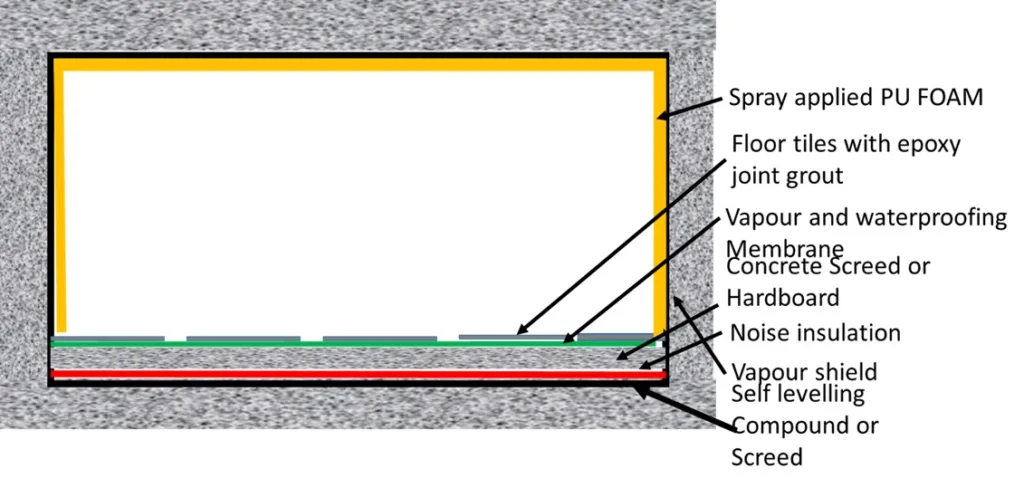
Insulation Systems for Interior Protection
The picture above demonstrates typical room interior insulation systems designed to combat surface moisture, heat, impact noise, and more. Materials like PU Foam and Hardboard provide insulation not only for heat and impact but also for airborne noise. This image focuses on insulation systems, while the final wall finish can be applied with non-absorbent materials such as Gypsum Laminates, ensuring additional protection.
For floors, materials like vitrified tiles with epoxy grout-treated joints, engineered stones, PVC, and treated wooden flooring are recommended. Granite and marble surfaces, on the other hand, require special treatments like silicone-impregnating sealers to minimize moisture absorption from ambient air. While air conditioners help reduce indoor humidity, when powered off, condensation may cause floors to become damp. Therefore, it is crucial that insulation systems prevent moisture from entering the concrete both from the exterior environment and interior air.
The Growing Importance of Building Insulation in India
This article does not cover other environmental factors such as the Air Quality Index (AQI), ambient humidity, or fire safety, as issues like AQI are typically addressed through HVAC systems. However, the focus here is on the need for comprehensive building insulation, a concept that is still gaining recognition in India.
With consumer awareness and demand steadily increasing, building insulation will soon become a key area of attention for the construction and real estate industries. As the market evolves, insulation solutions addressing moisture, heat, and noise are expected to become integral to modern building practices, especially in response to rising consumer expectations for more sustainable and comfortable living spaces.
Conclusion:
As consumer expectations continue to evolve, building insulation will emerge as an important area of development in India. To meet these demands, real estate and construction companies must recognize the need for holistic environmental protection, going beyond structural stability to ensure long-term durability and occupant comfort.
About Author
The author is a seasoned consultant and contractor specializing in waterproofing and insulation works. With over 30 years of experience in multidisciplinary project management, the author combines engineering expertise with practical know-how to deliver effective solutions in the construction industry.
Email Id: uranuschemicals@gmail.com
Cover Image Source: asianpaints.com


